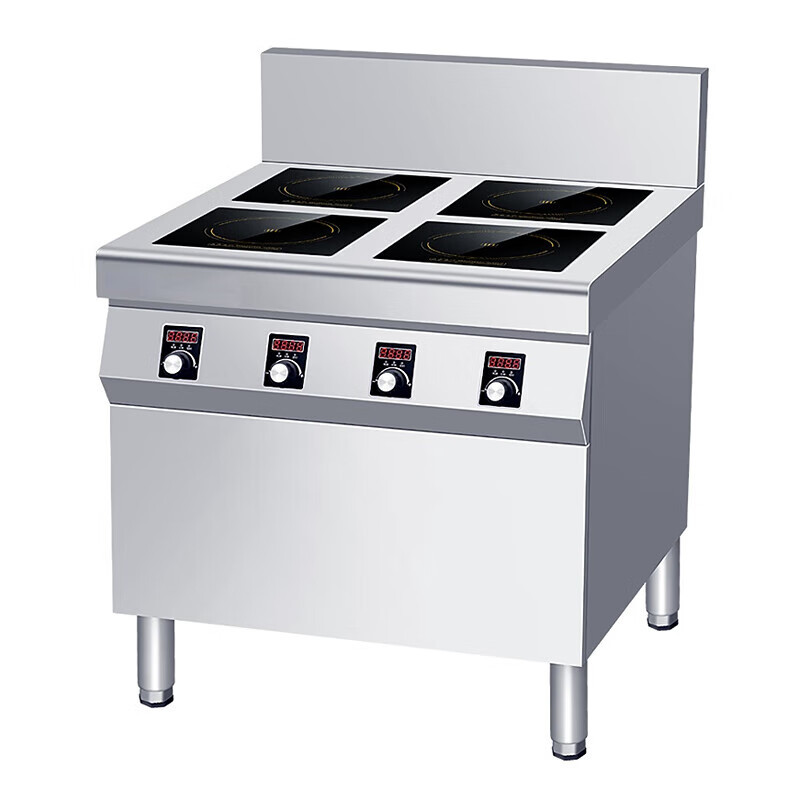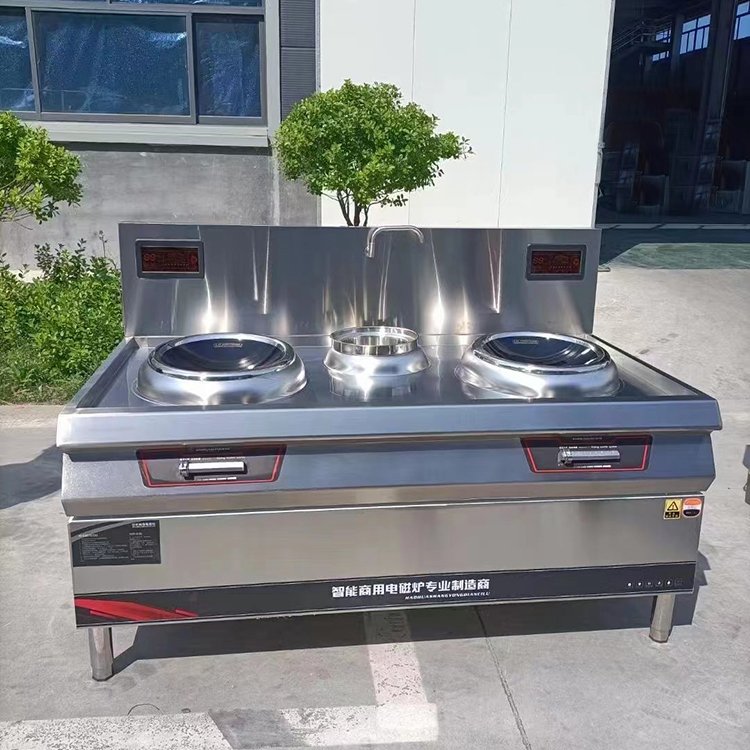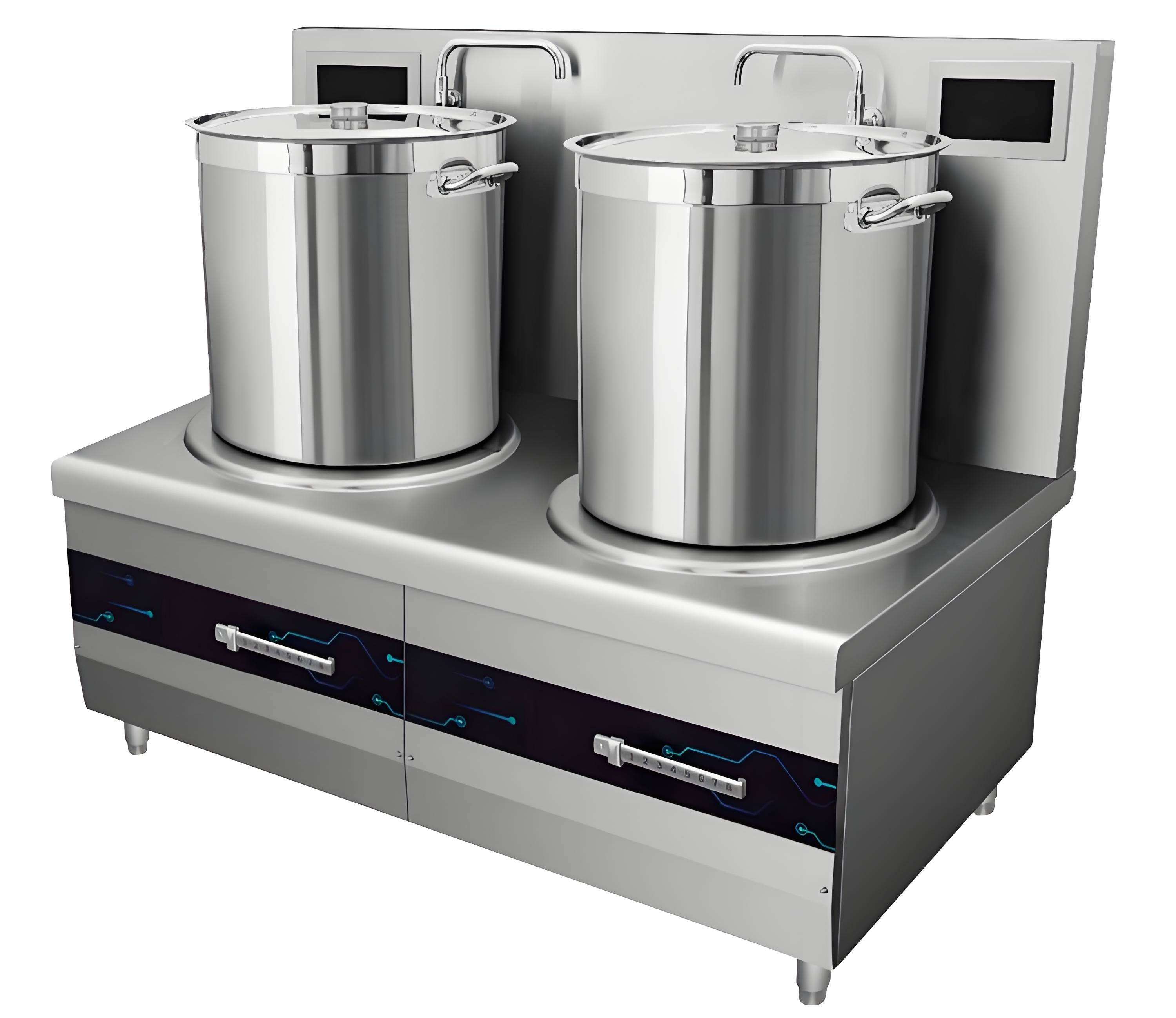Having spent over a decade in the restaurant equipment industry and diving deep into the world of Google SEO to help businesses amplify their online presence, I’ve seen firsthand how kitchen technology shapes the culinary landscape. One question I’ve been hearing a lot lately is: “Why are so many restaurants switching to commercial induction cookers for stir-frying?” It’s a great question, especially since stir-frying—particularly in cuisines like Chinese, where high heat and precise control are everything—has traditionally been tied to gas burners. As someone who’s worked with chefs and restaurant owners to optimize their kitchens, I want to unpack the reasons behind this shift, share some real-world insights, and offer practical advice for anyone curious about this trend.

The Evolution of Restaurant Kitchens
When I started in this industry, gas stoves were the undisputed kings of restaurant kitchens. The roaring flames, the instant heat, and the ability to toss a wok over a blazing fire were practically romanticized in culinary circles. But times have changed. Commercial induction cookers have quietly taken over, even for high-heat techniques like stir-frying, which many chefs once swore could only be done with gas. This shift isn’t just a fad—it’s driven by practical, economic, and environmental factors that align with the demands of modern restaurants.
I remember visiting a bustling Cantonese restaurant in 2019. The head chef, a traditionalist, was skeptical about induction but agreed to test a commercial induction wok burner. Within a week, he was hooked—not just on the speed but on how much easier it was to maintain a clean, cool kitchen. That experience stuck with me, and it’s a story I’ve seen repeated across countless kitchens. So, let’s dive into why induction has become the go-to choice for stir-frying in restaurants today.
Why Induction Cookers Are Taking Over Stir-Frying
1. Unmatched Energy Efficiency
One of the biggest reasons restaurants are embracing commercial induction cookers is their energy efficiency. Unlike gas burners, which lose up to 60% of their energy to the surrounding air, induction cookers transfer 85-90% of their energy directly to the cookware []. This efficiency translates to lower utility bills—a huge deal for restaurants operating on tight margins.
In my early days consulting for a chain of Asian fusion restaurants, I analyzed their energy costs. Switching to induction cookers reduced their electricity bills by nearly 20% compared to gas. For stir-frying, where high heat is needed quickly, induction delivers power directly to the wok, minimizing waste. This is especially critical in high-volume kitchens where multiple dishes are cooked simultaneously.
2. Precision and Speed for Perfect Stir-Fry
Stir-frying demands precise heat control. Too low, and you lose the sizzle; too high, and you risk burning delicate ingredients. Commercial induction cookers excel here because they offer instant heat adjustments. Unlike gas, which has a slight delay as flames respond to knob tweaks, induction changes temperature almost instantly []. This is a game-changer for chefs who need to switch from a rolling boil to a gentle simmer in seconds.
I once worked with a Sichuan restaurant that struggled with inconsistent stir-fry results on gas burners. After switching to a 12KW commercial induction wok burner, they could maintain exact temperatures for dishes like mapo tofu, ensuring the sauce thickened perfectly without scorching. The chef told me it felt like “cooking with a superpower” because the control was so precise.
Moreover, induction cookers heat up faster than gas. For example, a commercial induction burner can boil two liters of water in about 4 minutes, compared to 8 minutes for gas []. In a busy restaurant, this speed means faster service and happier customers.

3. Safer and Cleaner Kitchens
Restaurant kitchens are chaotic—hot, greasy, and prone to accidents. Commercial induction cookers reduce risks significantly. They don’t use open flames, so there’s no chance of flare-ups or gas leaks. The cooking surface stays relatively cool, only heating the cookware, which minimizes burn risks []. Many units also have automatic shut-off features that activate when no pan is detected, adding an extra layer of safety [].
Cleaning is another big win. Gas burners often leave grease and soot buildup, especially in high-heat stir-frying where oil splatters are common. Induction cooktops, with their smooth glass-ceramic surfaces, are a breeze to wipe down []. I’ve seen kitchen staff go from dreading post-shift cleanup to finishing it in half the time after switching to induction.
4. Healthier Work Environment
Gas cooking produces indoor pollutants like carbon monoxide, nitrogen dioxide, and particulate matter, which can harm chefs’ health over time []. I worked with an Indian restaurant where the chef’s husband had developed respiratory issues from years of working in a gas-powered kitchen []. Switching to induction eliminated these fumes, creating a healthier workspace.
This isn’t just about staff comfort—it’s a customer draw too. Diners are increasingly aware of environmental and health issues. A restaurant using commercial induction cookers can market itself as eco-friendly and health-conscious, appealing to a growing demographic that values sustainability.
5. Flexibility and Space Efficiency
Restaurants, especially smaller ones or pop-ups, often face space constraints. Commercial induction cookers come in various forms—countertop, drop-in, or freestanding—making them versatile for any kitchen layout []. For stir-frying, induction wok burners are designed to accommodate the curved shape of woks, ensuring even heat distribution [].
I once helped a food truck operator integrate a portable induction cooker into their setup. They were amazed at how a single 3500W unit could handle high-volume stir-frying without needing extensive ventilation or gas hookups. This flexibility is a lifesaver for businesses with limited space or temporary setups.
6. Environmental and Regulatory Push
The global push for sustainability is reshaping restaurant kitchens. Gas stoves emit methane and other greenhouse gases, contributing to environmental concerns []. In regions like Europe and parts of the U.S., regulations are tightening on gas usage in new constructions []. Commercial induction cookers, powered by electricity (which can come from renewable sources), align with these green initiatives.
For example, I consulted for a restaurant in California where new building codes favored electric appliances. Switching to induction not only ensured compliance but also qualified them for rebates through programs like Ava Community Energy []. For restaurants aiming for green certifications, induction is a no-brainer.

Comparing Gas and Induction for Stir-Frying
To make the differences clearer, here’s a comparison of gas burners and commercial induction cookers for stir-frying:
|
Feature |
Gas Burners |
Commercial Induction Cookers |
Winner |
|---|---|---|---|
|
Energy Efficiency |
35-40% efficiency, high heat loss |
85-90% efficiency, minimal loss |
Induction |
|
Heat Control |
Delayed response to adjustments |
Instant, precise adjustments |
Induction |
|
Safety |
Open flames, risk of gas leaks |
No flames, auto shut-off features |
Induction |
|
Cleaning |
Grease and soot buildup |
Smooth surface, easy to clean |
Induction |
Addressing the Wok Hei Concern
One common critique I hear from chefs is that induction can’t replicate wok hei—the smoky, charred flavor unique to stir-frying over high flames. This is a valid concern, especially for Chinese cuisine where wok hei is a hallmark. However, modern commercial induction wok burners are closing the gap. Units like those from Lestov or Panasonic use high-frequency magnetic fields (up to 60 kHz) to deliver intense heat, mimicking the searing power of gas [].
I worked with a Guangzhou-based restaurant that trained their chefs to adapt stir-frying techniques on induction woks. By preheating the wok thoroughly and using rapid tossing motions, they achieved a comparable wok hei. While it’s not identical to gas, the difference is often imperceptible to most diners, and the benefits of induction outweigh this minor trade-off for many kitchens.
Practical Tips for Adopting Induction in Restaurants
If you’re a restaurant owner or chef considering commercial induction cookers for stir-frying, here are some actionable steps based on my experience:
1. Choose the Right Equipment
Not all induction cookers are created equal. For stir-frying, opt for commercial-grade units with at least 3500W of power and 6mm-thick glass-ceramic surfaces for durability []. If you specialize in Asian cuisine, invest in an induction wok burner designed for curved cookware. Brands like Anvil, Apuro, or Lestov are reliable choices [,].
2. Ensure Compatible Cookware
Induction requires magnetic cookware (e.g., cast iron or magnetic stainless steel). Test your existing woks with a magnet—if it sticks, they’re compatible []. If not, consider induction discs for non-magnetic pans, though they’re less efficient []. I’ve seen restaurants save costs by gradually replacing only essential cookware.

3. Train Your Staff
Switching to induction requires a learning curve. Chefs accustomed to gas may need to adjust their timing due to induction’s rapid heat response []. Organize workshops to teach techniques like preheating the wok or adjusting temperatures for different dishes. I’ve found that a single training session can boost chef confidence significantly.
4. Optimize Kitchen Setup
Check your electrical infrastructure. Commercial induction cookers often require 240V outlets for high-wattage units []. Consult an electrician to ensure your kitchen can handle the load, especially for multiple burners. For smaller setups, portable countertop models are a great starting point.
5. Leverage Marketing
Highlight your use of commercial induction cookers in your marketing. Promote your restaurant as eco-friendly and health-conscious. I helped a client add a “Green Kitchen” badge to their website, which increased customer inquiries by 15%.
Challenges and How to Overcome Them
While induction is a game-changer, it’s not without challenges. Here are a few I’ve encountered and how to address them:
High Initial Cost: Commercial induction ranges can cost three to four times more than gas burners []. However, long-term energy savings and potential rebates offset this. Plan your budget and explore financing options.
Power Dependency: Induction relies on electricity, so power outages can disrupt service. Some restaurants use backup generators to mitigate this []. I’ve seen kitchens with hybrid setups (induction for most tasks, gas for backup) to balance reliability.
Learning Curve for Wok Hei: As mentioned, achieving wok hei on induction takes practice. Experiment with high-power settings and rapid tossing to replicate the effect. Training with an experienced chef can make a big difference.
A Real-World Success Story
Let me share a story from 2024. I worked with a mid-sized Thai restaurant struggling with high gas bills and a cramped kitchen. Their gas burners were causing ventilation issues, and the staff complained about the heat. We installed two 5000W countertop induction cookers, specifically designed for woks. The chefs were initially skeptical, but after a week of training, they mastered stir-frying dishes like pad Thai and green curry. The kitchen was cooler, cleaner, and quieter, and their energy costs dropped by 25%. Best of all, customers didn’t notice any difference in taste, and the restaurant’s “eco-friendly” branding attracted new diners.

Conclusion: Induction Is the Future of Stir-Frying
The shift to commercial induction cookers for stir-frying isn’t just a trend—it’s a response to the evolving needs of restaurants. From energy efficiency and precise control to safety and environmental benefits, induction offers advantages that gas simply can’t match. While there are challenges, like the initial cost or adapting to new techniques, the long-term payoff is undeniable. As someone who’s seen kitchens transform with this technology, I’m convinced that induction is paving the way for smarter, greener, and more efficient restaurants.
If you’re running a restaurant or planning to upgrade your kitchen, don’t shy away from induction. Test a unit, train your team, and watch how it elevates your workflow and customer experience. Got questions about making the switch? Drop them below—I’d love to share more insights from my journey in this industry!
Related Questions and Answers
1. Can induction cookers really handle high-volume stir-frying in a busy restaurant?
Yes, absolutely. Commercial induction cookers, especially those with 3500W or higher, are designed for high-capacity cooking. Units like 12KW wok burners can handle bulk stir-frying, boiling water in 4 minutes compared to 8 for gas []. Choose a model with multiple burners for peak hours.
2. Is it true that induction can’t produce wok hei?
While induction doesn’t create the same flame-licked wok hei as gas, high-powered induction wok burners (e.g., 12KW or higher) can achieve a similar effect with proper technique. Preheating the wok and rapid tossing are key. Many chefs find the difference negligible for most dishes.
3. How much does it cost to switch to commercial induction cookers?
Costs vary, but a commercial induction wok burner can range from $1,000 to $5,000, compared to $300-$1,500 for gas burners []. Factor in electrical upgrades (potentially $10,000 for small restaurants) and cookware if needed. Energy savings and rebates can offset this over time.
4. Do I need to replace all my cookware for induction?
Only non-magnetic cookware needs replacing. Test your woks with a magnet—if it sticks, they’re induction-compatible []. For non-magnetic pans, induction discs are a workaround, though less efficient. Most restaurants find they only need to replace a few pieces.
5. How do I convince my chefs to switch from gas to induction?
Start with a trial period using a portable induction unit. Offer hands-on training to demonstrate speed and precision. Highlight benefits like a cooler kitchen and easier cleanup. In my experience, chefs warm up to induction once they see it in action.





